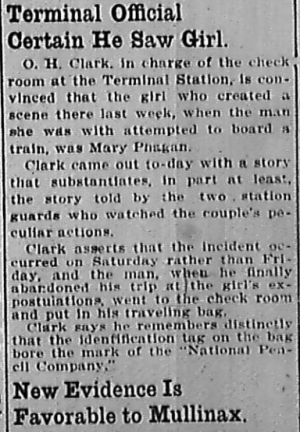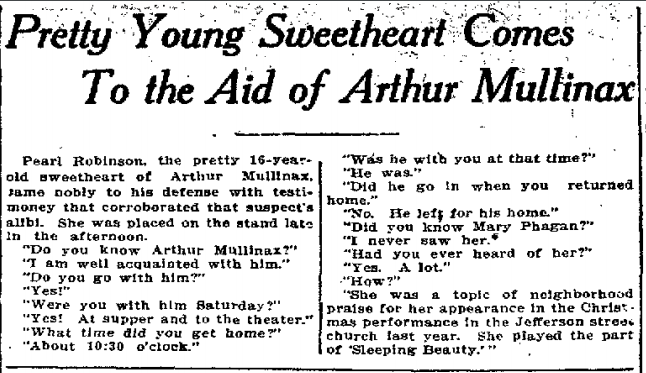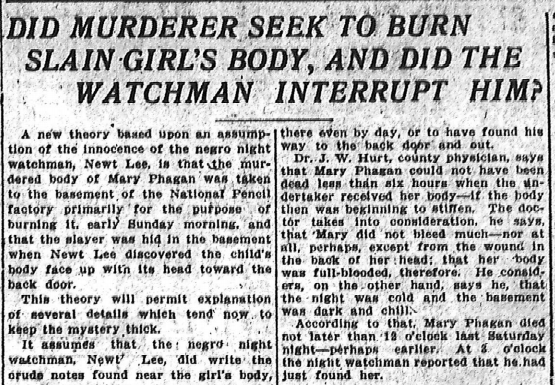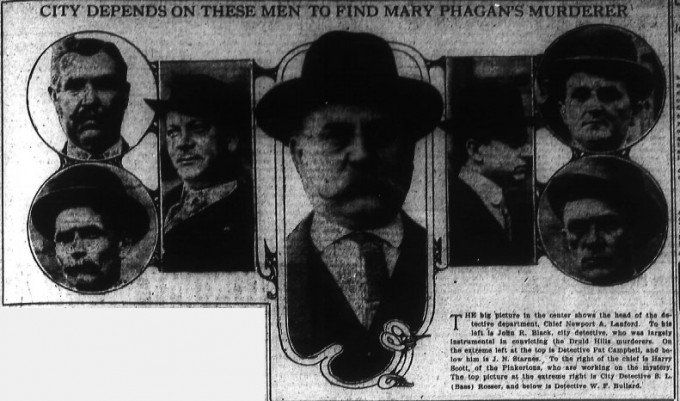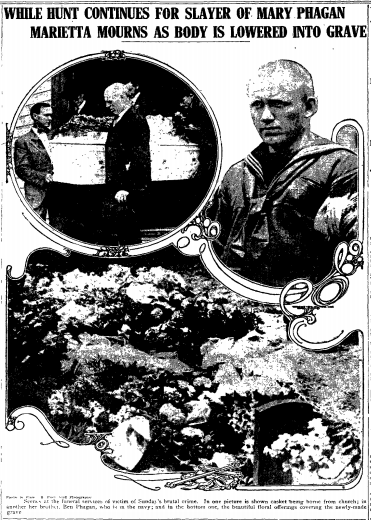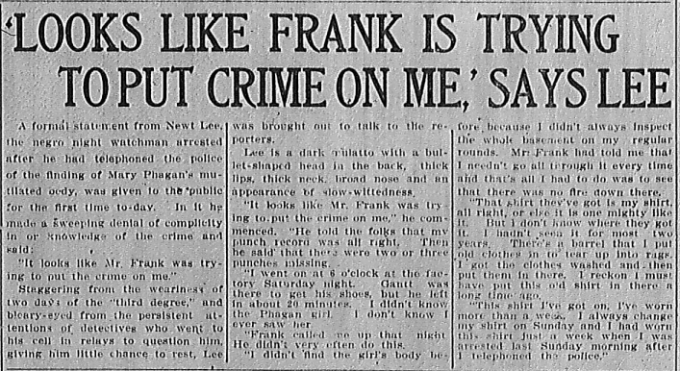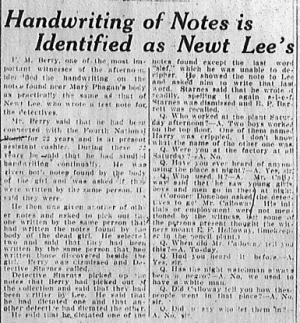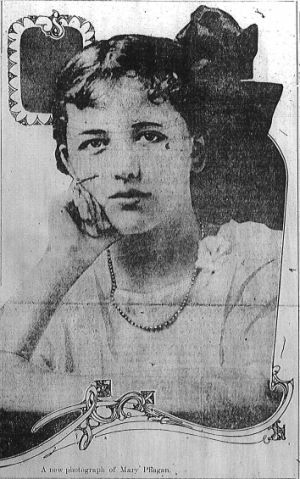Another in our series of new transcriptions of contemporary articles on the Leo Frank case.
Atlanta Journal
Saturday, May 3rd, 1913
Following Meeting Lasting Two Hours, Officials Investigating Murder Mystery Visited Scene of Tragedy
NO CHANGE IN PLANS FOR INQUEST MONDAY
Progress Has Been Made In Developing Evidence, It Is Said, but its Nature Has Not Been Divulged
The three central figures in the investigation of the Phagan murder case—the solicitor general, the coroner and the chief of detectives—held a conference Saturday morning, which lasted for more than two hours. The officials discussed the evidence in the case and the many theories which have been advanced, but refused to divulge any definite information about the long conference.
It is said, however, that the officials have decided to lend their efforts towards building their case on the ground that Mary Phagan never left the pencil factory.
New evidence, strengthening this view, is said to have been developed during the day by Detectives Black and Scott and Starnes and Campbell, but they refuse to divulge its nature. Continue Reading →

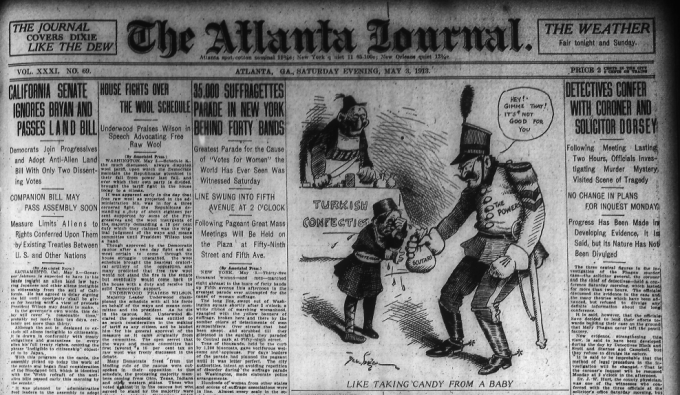
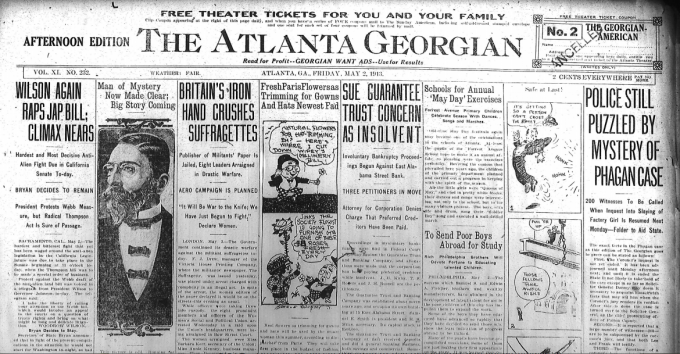
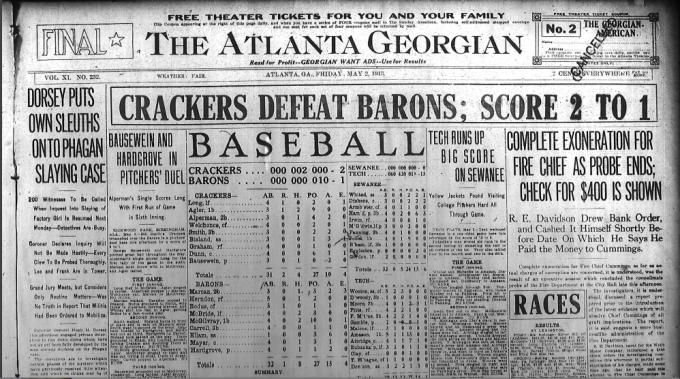
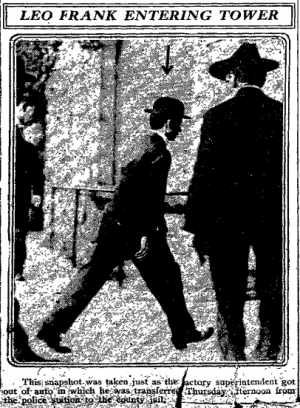
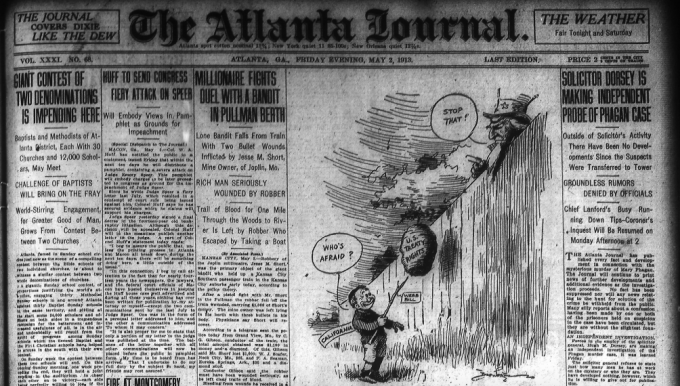
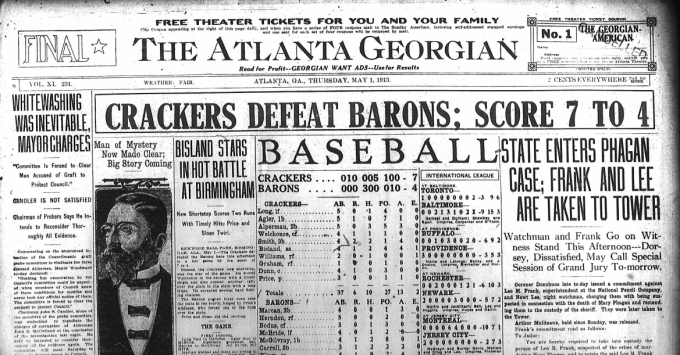
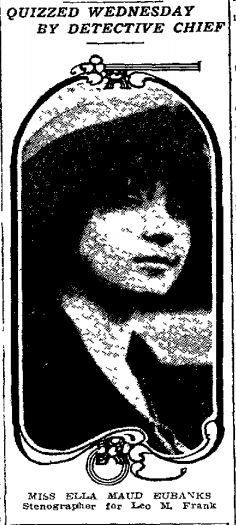
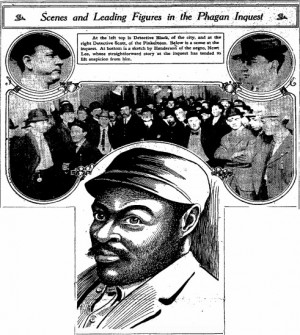
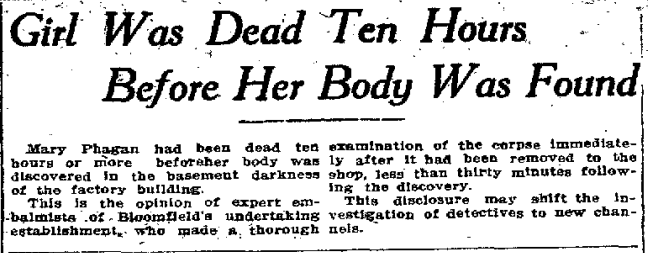

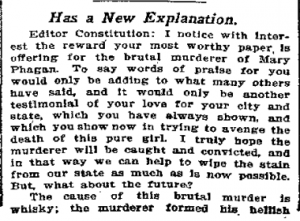
![J. A. White [left and] Harry Denham. The two mechanics who were the last workmen to leave the National Pencil company on Saturday afternoon. Leo M. Frank was in the building when they went out. Photo by Francis B. Price, Staff Photographer.](https://www.leofrank.org/wp-content/uploads/2016/04/Newt-Lee-Tells-His-Story-During-the-Morning-Session-300x414.png)
